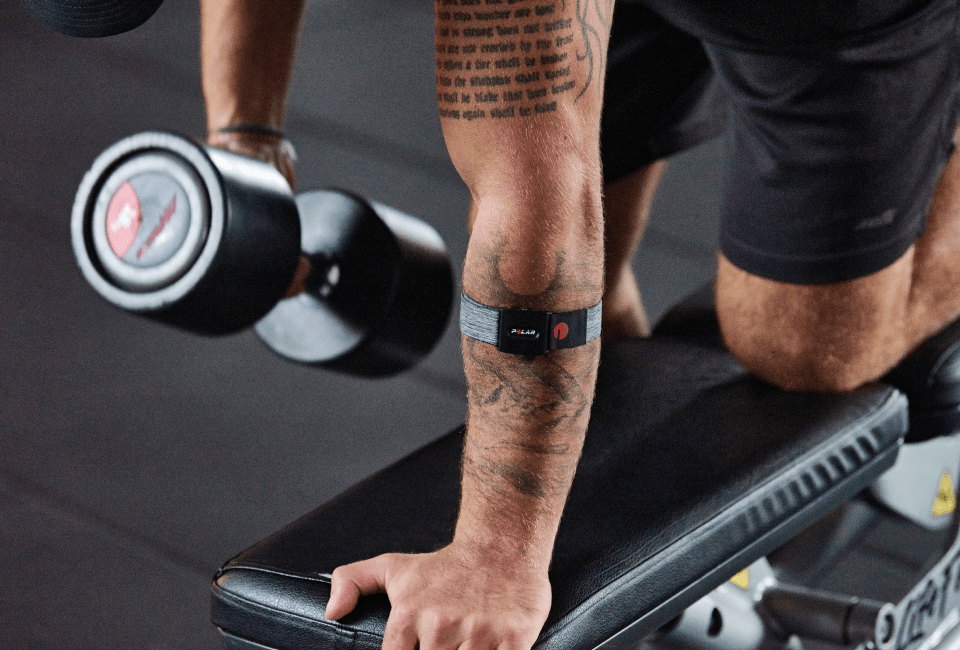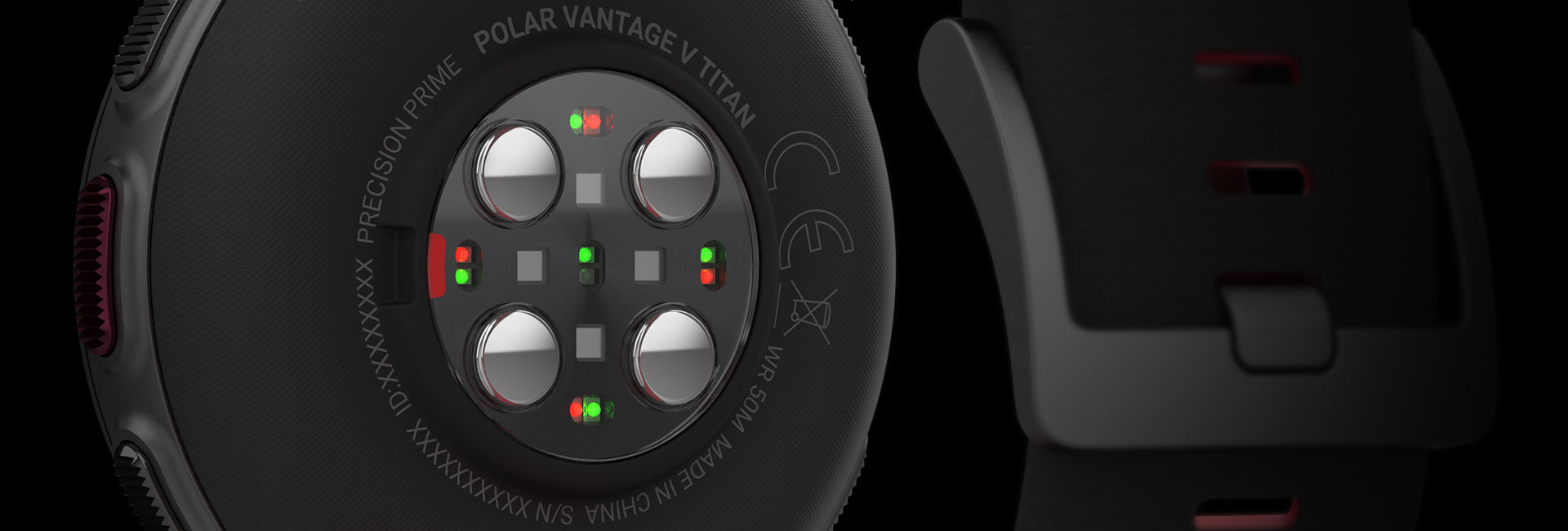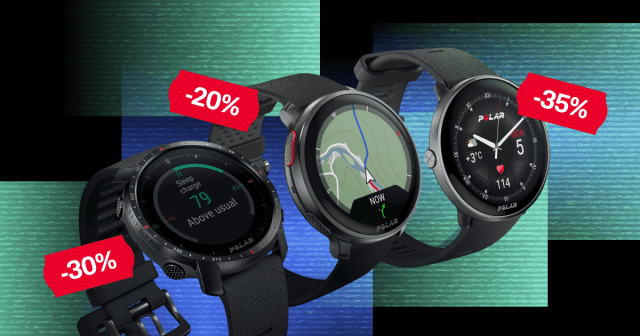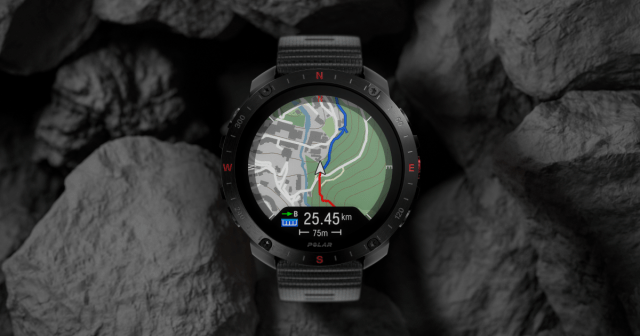Heart rate measurement technology has come a long way since its humble beginnings over 40 years ago. What started as a highly-successful strap-on-the-chest solution, has evolved into accurate optical heart rate monitoring that measures heart rate straight from the wrist.
Even though a chest strap is still, in many cases, the most accurate way to measure HR, optical heart rate monitoring is conquering new ground.
The convenient usability and performance of optical heart rate monitors is the result of long-term scientific research, both on the technology side and on the physiological side, the Polar Precision Prime™ sensor (available in the latest Polar watches from Polar Vantage 2 to Polar Ignite 3) representing the latest breakthrough solution.
But before we dive deeper into the latest wonders of optical heart rate measurement technology, let’s take a look at what optical heart rate (OHR) means and how we got to this point.
How does optical heart rate monitoring work?
Buckle up, it’s about to get technical.
Optical heart rate measurement uses light to measure tissue changes at the sensor’s location caused by blood circulating throughout the body. As your heart beats, this volume changes and high blood volume causes less light to return to the optical sensor, whereas low volume increases the amount of returning light.
Measuring the time between high- and low-light intensities enables the device to measure beat-to-beat time intervals and calculate heart rate from that data. The signal that the device measures with the optical sensor is called a photoplethysmograph (PPG).
If this is a bit confusing, we don’t blame you — let’s simplify it. With respect to optical heart rate monitoring in general, it’s fairly easy to explain and demonstrate:
If you put a flashlight to your finger, it turns red. To the human eye, it looks like it’s entirely, evenly red, but with an accurate light detector, you can measure and observe that the redness varies according to your heartbeats (as your heart pumps blood around your body and all the way to your fingertip).
Polar Precision Prime – the new kid on the block
The new Polar Precision Prime technology solves one of the biggest shortcomings of previous wrist-based optical heart rate monitoring devices: inconsistent data from excess movement.
To tackle this challenge and to rule out any motion artifacts that might disturb the heart rate signal and produce unreliable readings, the new Polar Precision Prime’s sensor fusion technology combines optical heart rate measurement with skin contact measurement. What does this mean?
Basically, it’s a state-of-the-art solution to overcome problems with motion to offer the best possible optical heart rate monitoring. The reliable wear detection means the HR measurement is activated only when the product with Polar Precision Prime technology is properly on the wrist, for training sessions and 24/7 activity tracking.
How did we get here? How Polar Precision Prime works
The first invention to overcome the problems caused by movement was to add a 3D acceleration sensor to the device. Measuring the acceleration and the optical signal together enables the device to differentiate between volumetric changes caused by the pumping heart from the changes caused by the movement of the hand.
The second invention was to add more LEDs to provide more optical light paths to the detector. When the signals from each LED are sufficiently similar, the algorithm can conclude that they originate from the pumping heart and not from hand movements. By adding colored LEDs, the longer wavelengths penetrate the skin deeper, giving a more accurate reading — especially when the skin is cold.
The third invention to compensate for motion is to measure how well the sensor is touching the skin. The sensor measures the electrical contact from one galvanic pin to another. When the back of the watch is not properly on the skin, this electrical contact is very weak or nonexistent. The fluctuation of the electrical contact signal helps determine that the sensor is moving in relation to the skin, which is always harmful to reliable and accurate optical heart rate measurement.
Polar Precision Prime versus other heart rate technology
Wrist-based heart rate monitors are now pretty common throughout the fitness space. Despite this, not all optical heart rate monitors are created equal — it’s one thing to measure heart rate while sleeping, and another thing entirely to measure while swinging a tennis racket or running a marathon.
And it’s not just our claim, either, science says so, too.
The Polar H10, Polar OH1, and the new Precision Prime technologies were recently validated in a series of scientific studies, which will be published during spring-summer 2019. These studies compared HR at rest and during various activities ranging from light household activities and walking to jogging and playing floorball:
- The studies demonstrated that the Polar H10 technology was comparable to ECG at rest and better than ECG in intensive exercises.
- Based on the results, the Polar H10 was considered a golden standard for HR measurement in field settings.
- Consequently, the Polar OH1 and Polar Precision Prime were then compared to the Polar H10 technology: For Polar OH1, performance was excellent with a mean absolute error percentage of less than 1% in all activities. For the Polar Precision Prime, the mean absolute error varied between 1-13% being lowest at rest and highest in floorball.
As mentioned above, the Polar Precision Prime solution is the only one on the market that uses three different methods for overcoming the problems caused by motion artifacts. This includes a 3D acceleration sensor, multiple optical channels using several wavelengths of light, and an electrical sensor for measuring the quality of the sensor-skin contact.
Beyond Watches: Polar Verity Sense
Typically, optical heart rate sensors are found in sports and smartwatches. In some occasions, the wrist might not be the most adequate places to measure heart rate. Sports that require much wrist movement, like racket sports or swimming, might compromise the accuracy of wrist-based optical heart rate sensors. Also, tattoos on the wrist could block the light require to measure heart rate.
For that reason, optical heart rate monitors that you can wear on your arm, like Polar Verity Sense, are ideal for any sport. The biceps is an optimal and easy place to track heart rate, which allows accurate readings. It is a convenient, comfortable alternative to chest straps and wrist-based devices.

If you liked this post, don’t forget to share so that others can find it, too.
Or give it a thumbs up!
I like this article
Please note that the information provided in the Polar Blog articles cannot replace individual advice from health professionals. Please consult your physician before starting a new fitness program.





